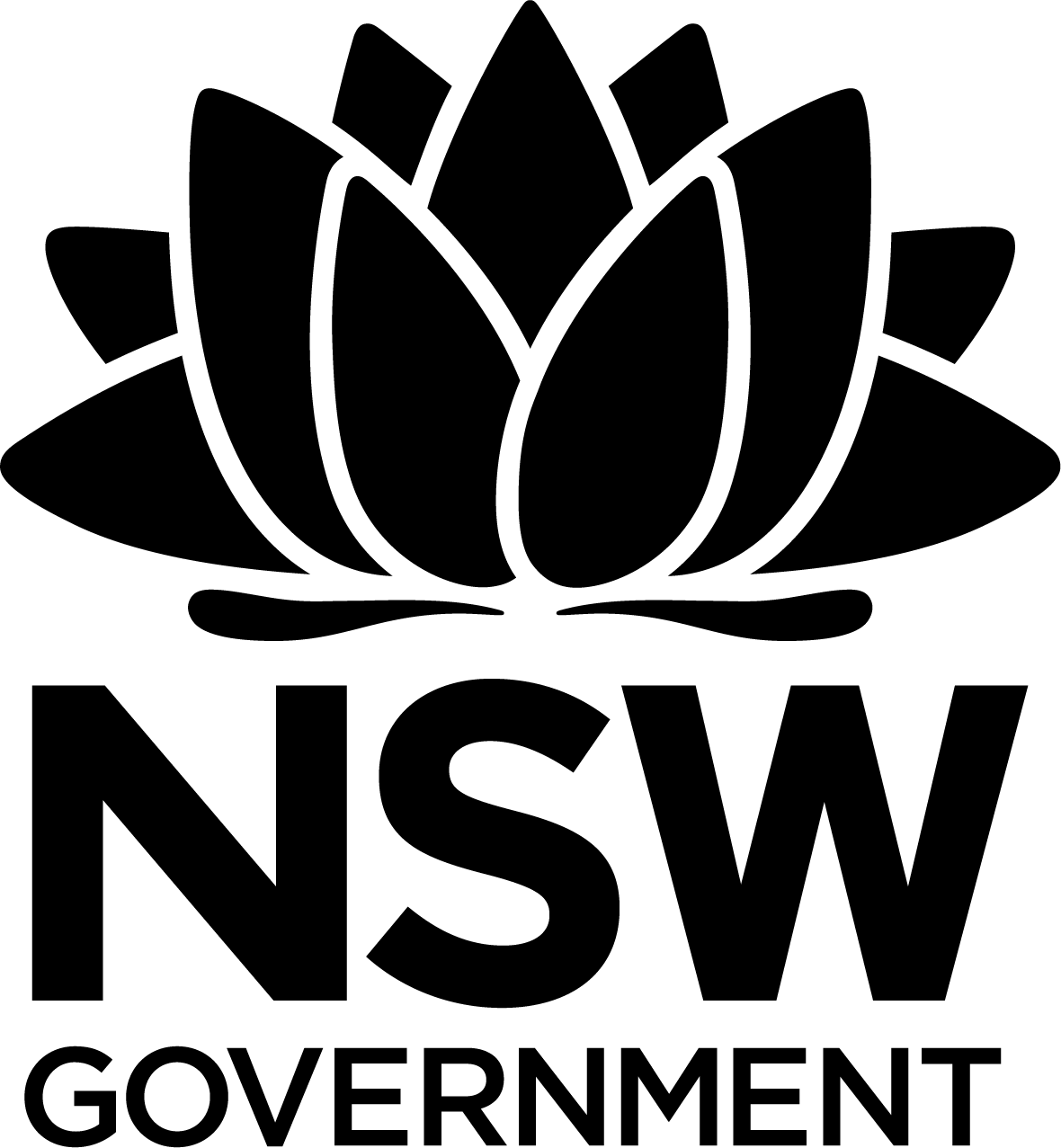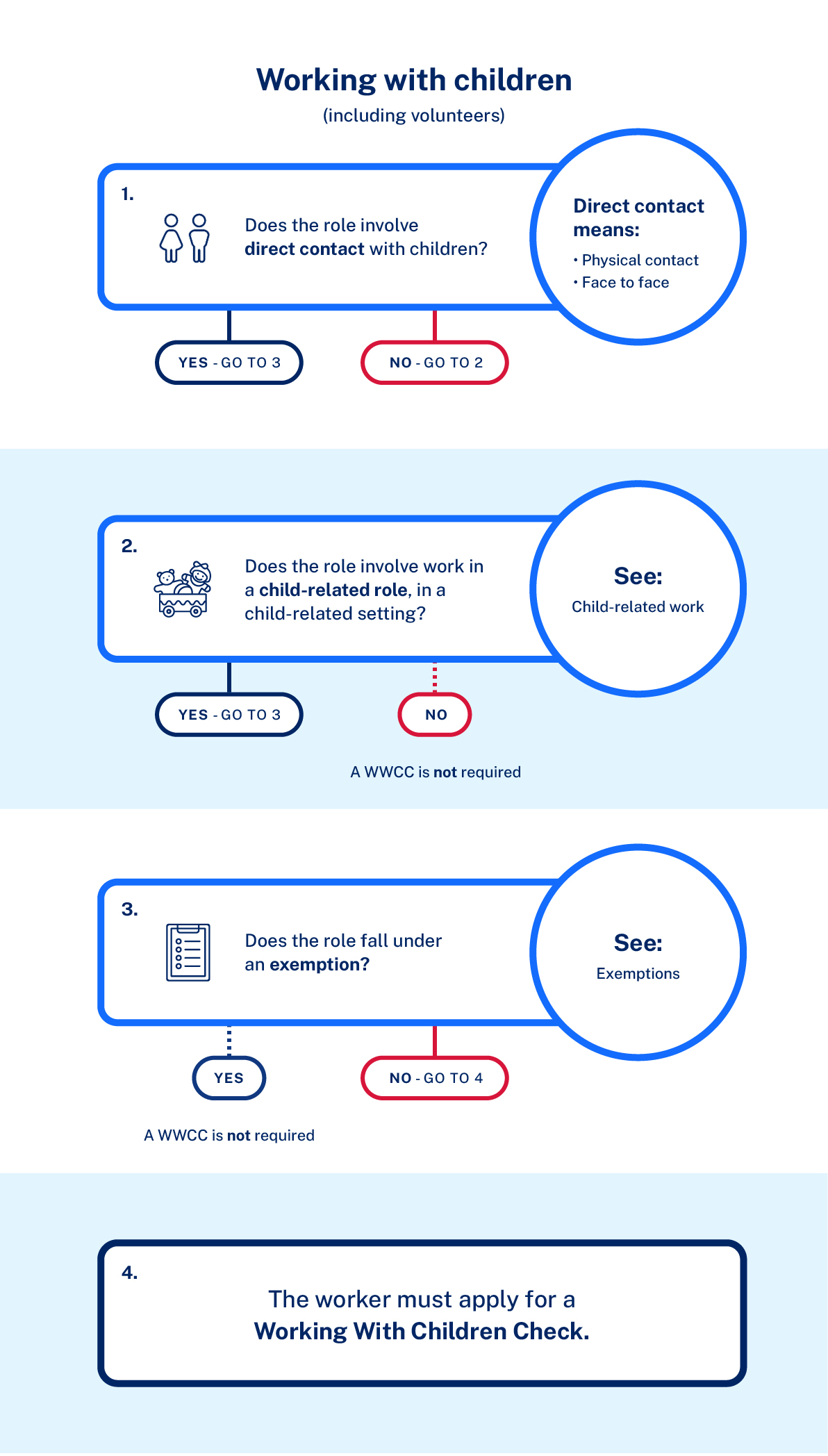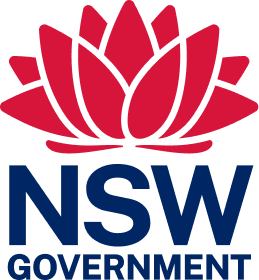
Crown land manager resource
Managing people
Most Crown reserves depend on staff, contractors, volunteers and others to operate. Ensuring that people involved in Crown land are valued and supported will help to ensure the ongoing viability of Crown reserves.
The following information provides guidance on your obligations for managing people on reserves, including recruitment, working conditions, training and other related responsibilities. Guidance on supporting and retaining volunteers is also provided.
Employment
When employing staff or contractors, make sure it’s done legally, and that the employee or contractor is properly engaged with all the required benefits and/or insurances in place. The recruitment process should be fair and equitable. It is not appropriate to give a job to a friend or to someone who has been doing the job in a voluntary capacity for many years, unless they are selected as part of a formal recruitment process.
Regardless of whether the person doing a job is being paid, they should have the appropriate skills and training. Training or certification can help avoid accidents in the workplace. Employees are entitled to all the rights available to them under the Work Health and Safety Act 2011.
Recruitment of paid staff and contractors
Appointing staff is the first step in a labour management system. To ensure appropriate staff are appointed, and the process of sourcing that labour is fair and transparent, the responsibilities and requirements of the intended position must be clearly defined.
The selection of one individual in preference to another is based on the ability to perform a clearly defined task with a skill set appropriate to the role in question.
Generally, CLMs should not employ family members or close relatives in paid positions. Where family members or close relatives are applicants for positions, CLMs should ensure that there is no conflict of interest in the decision-making process and that decisions are made by, and consistent with, fair and equitable assessment processes.
When appointing staff, it is important to document all details of the selection process. It might be necessary sometime in the future to show that the appropriate actions were taken in the placement process, and written records will assist with this.
Job and work descriptions
Develop a job description that outlines the purpose, accountabilities and reporting relationships of the role.
The first stage is to undertake a job analysis. A job analysis aims to answer three key questions about the role:
- What is done?
- How is it done?
- Why is it done?
The department can provide a checklist of matters that should be covered when undertaking a job analysis.
Using the information gathered through the job analysis, a job or work description can be developed. Ideally, job descriptions should be:
- simple
- honest in describing the expectations of the role
- focused on work requirements and organisational conditions
- prepared, where possible, with the input of position holders.
Download the job description template
Advertising a position
There are a number of approaches that can be taken to advertising positions on the CLM board and positions employed by the CLM. Depending on the nature of the position, these might include:
- listing board vacancies on this website. To list a vacancy, please contact the department
- advertising in the local/national press
- advertising in specialist publications
- using a recruitment agency.
Selecting a candidate
The CLM should convene a panel to assess applications and interview potential candidates. Panel members may include CLM board members, reserve managers and staff. It should include both males and females.
Panel members should be familiar with the job and work descriptions of the position being advertised.
For the selection of a candidate to be transparent and fair, members of the panel should declare any interest they have in selecting or excluding a particular candidate, and if they have a personal interest, should not take part in the selection process.
When interviewing candidates, it’s best to use behaviour-based questions, where individuals are asked to give examples of their previous behaviours as an indicator of how they are likely to act in a similar situation. Where possible, you should ask questions relating to situations that might arise in the role.
The interview panel should select a candidate based on the agreed selection criteria, developed from the job and work descriptions.
When appointments are made, it’s important to have accurate job and work descriptions for both employees and volunteers to ensure there is a clear understanding of expectations between individuals and the CLM.
Contractors
At times it may be necessary to use the services of contractors. When using contractors, ensure that the worker is actually a contractor and is classified as such, rather than being classified as an employee. If an individual is incorrectly employed as a contractor when they should be an employee, the CLM might underpay workers compensation and payroll tax obligations, or be liable for employee entitlements.
The department has a policy that outlines how contractors and consultants should be sourced and managed. Contact the department to obtain further information on this policy.
Employee or contractor?
There is no definitive test to determine employee versus contractor status. If you’re not sure which category fits one of your workers, the section below outlines indicators that can be used to assess whether a worker is a contractor or an employee.
Employee or contractor?
| Indicator | Worker is likely to be an employee | Worker is likely to be a contractor |
|---|---|---|
| Control | The CLM has the right to control how, when and where the worker carries out the work. | The worker is required to provide a specified result and may manage how, when and where the result is achieved. |
| Results | The contract is for the labour or services of the worker. | The contract is for the achievement of a given result. |
| Independence | The worker is obliged to perform more than just a set of specific duties in accordance with a contract. | The worker is obliged to perform only the specific duties that are detailed in the contract. |
| Power to delegate | The worker does not have the right to delegate work to others. Permission may be required from the worker’s supervisor to make such a delegation. | The worker has unlimited power to delegate work to others in order to complete a task. |
| Risk | The worker has little or no exposure to risks associated with the work being performed. Examples of risk include prospective cost of injury, prospective cost of payment default. | The worker stands to make a profit or a loss on the task. He or she also is exposed to risks associated with the work. |
| Basis of payment | The worker is paid an hourly rate, piece rates or award rates. | The worker is paid based on the achievement of the specified results. |
| Tools and equipment | The worker uses tools and equipment provided by the employer. | The worker uses his or her tools and equipment. |
| Hours of work | The worker works standard or set hours. | The worker is free to determine his or her own hours of work. |
| Appointment | The worker is recruited via an advertisement by the employer. | The worker advertises his or her services to the public at large. |
| Conditions of engagement | The agreement has characteristics associated with an employment relationship, such as leave entitlements, superannuation benefits and reimbursement of expenses. | The agreement is not characterised by conditions usually associated with an employment agreement. |
Managing caretakers
Many Crown reserves across the state rely on the services of a caretaker for day-to-day on-site operations. Engaged by the CLM, caretakers often have a range of tasks such as supervising grounds, managing public access, administration duties, managing bookings, cleaning, managing workers, inspecting sites and maintenance works.
Some caretakers reside on site, such as a lighthouse keeper or caravan park manager. Other caretakers live offsite and travel to a reserve to carry out their roles.
The tips below should help you manage and support caretakers.
Top tips for taking care of caretakers
- Recruitment: Engaging caretakers must be done in a transparent manner, following a competitive process. Caretakers should be qualified to carry out the role. An advertisement could be placed in a local newspaper or online as a way to find candidates for the role. Decisions about engaging a caretaker should be a matter discussed, decided and documented by the board at a meeting.
- Engagement type: Carefully consider if a caretaker should be engaged as an employee, independent contractor or volunteer. Because of the varying types of CLMs and Crown reserves across NSW, different engagement types may apply. The NSW Volunteering website has resources that can help, including a fact sheet on the differences between a volunteer, employee or independent contractor.
- Formal agreement: All caretakers need to be engaged using a formal written agreement. This includes volunteers—a handshake is not enough. This agreement should clearly state all roles and responsibilities. For example, is the caretaker required to mow the lawns onsite, or carry out regular safety inspections? There is a range of templates for engaging workers on the Australian Government Fair Work Ombudsman website. NSW Volunteering has a sample volunteer agreement and volunteer position description.
- Living arrangements: A formal agreement should cover accommodation for caretakers who live on reserves (or who receive any other accommodation benefits as part of an agreement). This can be done either as part of the employment contract or as a separate tenancy agreement.
- Ongoing management: CLMs should have regular contact with caretakers to provide support and undertake performance reviews.
Employment and job skills programs
The Australian Government’s Department of Employment, Skills, Small and Family Business coordinates a range of employment and job skills programs that might be helpful in providing appropriate workers for the reserve. Information on these programs is available on the department's website
The NSW Government has some jobs and training programs that may suit some CLMs:
- Jobs for NSW offers grants for small businesses and startups in regional NSW.
- Smart and skilled provides fee-free apprenticeships and traineeships, giving you people with the skills you need to grow your business.
- Smart, Skilled and Hired Youth Employment Program teams up with employers to provide jobs for people 15–24 in areas of high youth unemployment. The program is offered to employers in Western Sydney, the Central Coast and Hunter, New England/North West and the North Coast.
- NSW Corrective Services’ Community service work program could be another source of labour to assist on Crown reserves. The program provides an opportunity for offenders to repay the community for their crimes through unpaid work.
Reserve managers need to make sure that workers sourced through government programs are provided with detailed information on the tasks they are required to undertake and, at least initially, are closely supervised to ensure that they’re carrying out their duties correctly and in a safe way.
Broken Hill Regional Events Centre – Work for dole activities
The Broken Hill Regional Events Centre has hosted a number of work for the dole projects, where the program not only provided workers, but also helped fund the material. Chair of the board, Cheryl Krutli, says it’s been great for the reserve, and for the workers too.
“For example, if we wanted to do some fencing or construct a new shed, we applied to the program which funded the project supervisor and contributed to the materials, with the board funding the balance", said Cheryl.
“We’ve also been very fortunate where they’ve done things like building a retaining wall or helped put up a new fence, and erected a camp kitchen and a storage shed. Their contribution with funds and labour has meant the projects happen a lot sooner than if we had to do it all ourselves.
“And I think it’s good for the participants, some of whom have been on benefits for a very long time. They learn some new skills.
“On one of our projects, about two or three years ago, we had 11 participants. Afterwards, six of them got part- or full-time work with the contractors – like the concreter or the guy supervising putting up the shed.”
Orientation and training
Once paid or unpaid workers are appointed, introduce them to the reserve as early as possible. An effective orientation program can reduce the time it takes for a worker to be productive, increase their job satisfaction, reduce the level of worker turnover, and improve workplace health and safety.
Key elements to cover in a reserve orientation program are:
- the aims and objectives of the CLM and the purpose of the reserve
- introductions to fellow workers (both employees and volunteers)
- familiarisation with the office and reserve amenities
- reviewing codes of conduct – the Crown reserves code of conduct and any other code of conduct adopted by the CLM (if applicable)
- overview of relevant risk management and work health and safety procedures, including personal protective equipment, emergency procedures and first aid.
Paid employees may require a more job-specific orientation as well. This should focus on clarifying duties, targets, expectations and daily interactions needed to carry out their role.
Where resources allow, allocating a ‘buddy’ to the new worker can be a valuable part of orientation. A buddy is an experienced worker who can assist the new worker and answer questions during the early stages of their employment.
Training
To ensure the best possible performance of the workers on the reserve (both paid employees and volunteers), training requirements should be considered. For example, from a risk management perspective, it may be necessary for certain workers to have regular health and safety training sessions. When considering reserve-wide training needs, CLMs should consider any high-risk areas identified from the risk management checklist.
Types of training that may be required
When assessing what type of training is required, the best starting point is to review the job or work descriptions and then consider the outcome of recent performance discussions (managing performance is discussed below). Differences between what’s expected of a position and what’s being delivered by the position holder may suggest a development need that could be addressed by training.
Training may also be required to prepare for future changes such as the introduction of a new system or new activities in the reserve.
Training is not limited to formal training sessions. Effective learning can be achieved through informal on-the-job methods, such as job shadowing, mentoring by experienced co-workers, visiting other reserves, and team meetings.
Making sure the training is relevant to those involved is key to maximising its effectiveness.
Managing performance – performance reviews
Managing the performance of paid employees and volunteers is another important component in effective labour management. It’s not necessary to have a complex performance management system. However, monitoring performance, recognising areas of high performance, and identifying development needs should be a continuous process.
Regular discussions (quarterly or six-monthly, depending on the role) should review aspects of performance that paid employees and volunteers typically want to know, such as:
- What do you want me to do?
- How well am I doing? What do you think of my performance?
- How could I be doing my job better?
- How will I be recognised for my contribution?
Referring to the job or work description, which outlines the responsibilities and accountabilities of a position, can help when conducting a performance management discussion.
Once performance levels have been agreed during a performance management discussion, achievement of those levels can be reviewed at later discussions.
Employer obligations
An important part of managing labour is ensuring that all employer obligations are met.
For example, a range of employment-related taxes may be relevant, such as:
- Pay as you go (PAYG) withholding
- Fringe benefits tax (FBT)
- Payroll tax.
Other employer obligations which must be met are:
- Superannuation guarantee
- Workers compensation
- Leave entitlements.
The CLM’s obligations in this regard may change from time to time, and will vary between CLMs. It is important to ensure you are up to date with what is required.
Working with children
Children and young people around NSW are involved in child care, schooling, health treatments, refuges, clubs, church groups and other places where adults are employed to work with them.
Most adults do a great job in helping kids grow and develop safely in these environments. However, there are always risks when you take responsibility for the wellbeing of children and young people.
Being a child-safe and child-friendly Crown reserve and using the Working with Children Check helps manage these risks.
The following information has largely been sourced from the NSW Government’s Office of the Children’s Guardian (OCG) website. CLMs should consult this website for further information and guidance.
Obligations of a CLM
If your organisation interacts with children, you have a legal obligation to:
- identify any roles that are child-related
- ensure that all employees or volunteers working in child-related work have a valid Working With Children Check (WWCC).The check is currently free for volunteers
- ensure that your organisation is registered with the OCG (as an employer) and you register with the OCG every person involved in child-related work. This is so that the OCG can contact you should a WWCC be revoked at any time in the future
- ensure that your organisation keeps records of who performed the checks and when, as well as noting the expiry date on checks so they can be followed up.
Child-related work is defined on the OCG website. It includes coaches and managers of sports teams, people providing entertainment, education and other activities for kids and workers in recreational clubs. In some cases people working with children don’t need a WWCC. See the OCG website for detailed information about exemptions.
The decision tree below can help you determine whether a WWCC is needed.

For more on the registration process, refer to the OCG’s information for employers.
Developing child-safe and child-friendly organisations
Organisations that involve children in their work should have a strong interest in keeping children safe in those environments. Good child-safe policies and practices are the best way to reduce potential risks and keep kids safer.
The child-safe approach includes education and supervision of both paid and unpaid staff about appropriate and acceptable behaviours.
The OCG encourages organisations to use a range of responses to manage the potential risks in their individual environments, including meeting their WWCC legal obligations. While a criminal record check can be an important tool in an organisation’s approach to being child-safe, it cannot identify people who have not previously been caught or are yet to offend.
Implementing effective child-safe policies and practices is the best way for an organisation to protect the children they are involved with.
See Become a child safe organisation on the OCG website for information on developing child-safe policies and risk management strategies.
Reporting child-safety incidents and concerns
Many people find it difficult to raise a concern or a problem about the organisation they are involved in. Children, in particular, are often reluctant to complain and may feel powerless.
There should be well-defined reporting and management arrangements for incidents or concerns. Staff should make it clear to children that they can approach any person in the organisation to express concerns about their treatment and they will be taken seriously. Employees and volunteers should also be told who they can approach to express concerns.
Anyone who has reasonable grounds to suspect that a child or young person is at risk of being physically, sexually or emotionally abused should make a report to the Child Protection Helpline. Allegations of child abuse must be handled by a professional. Call Family and Community Services Helpline on 132111 (24 hours a day 7 days a week) if you suspect child abuse.
More information
For more on employer matters and obligations, the:
- Australian Taxation Office has a range of online resources that assist CLMs:
- NSW Government has information on workers compensation
- Australian Government has information on equal employment opportunities (including supporting employing people with a disability)
This Crown land manager web resource was printed on 27 Jul 2024. The information contained in this web resource is based on knowledge and understanding at the time of writing Jul 2024. However, because of advances in knowledge, users are reminded of the need to ensure that the information upon which they rely is up to date and to check the currency of the information by referring to the website (www.reservemanager.nsw.gov.au).
© State of New South Wales through Department of Planning, Industry & Environment 2024.
Page link: https://reservemanager.crownland.nsw.gov.au/administration/managing-people


